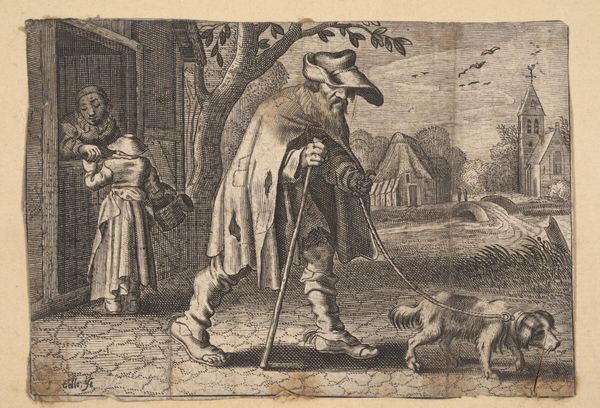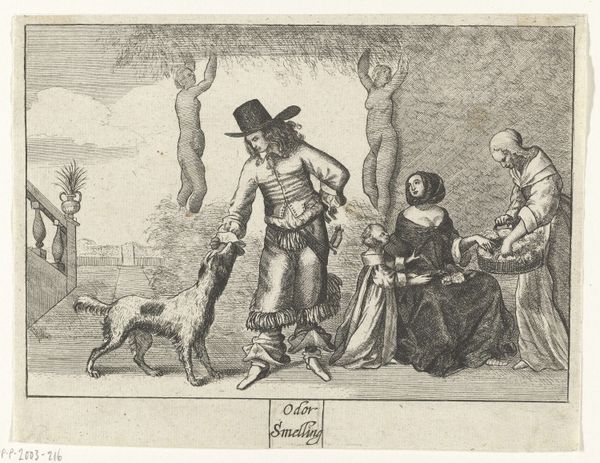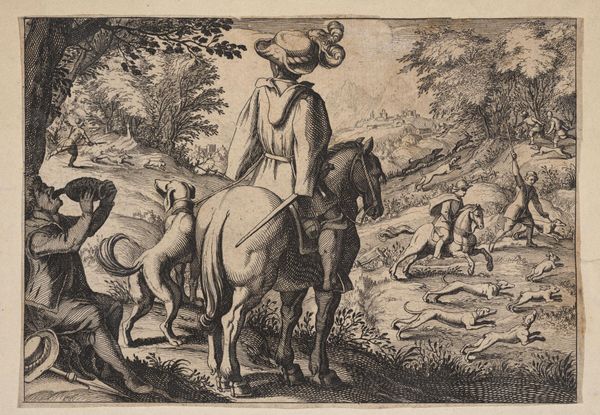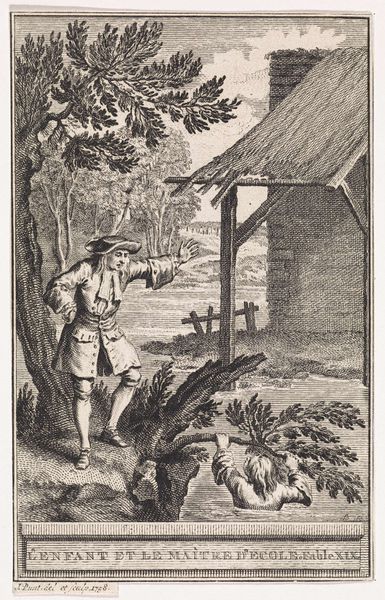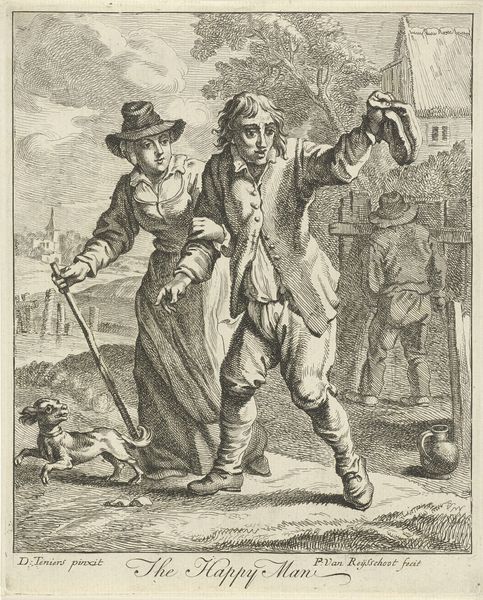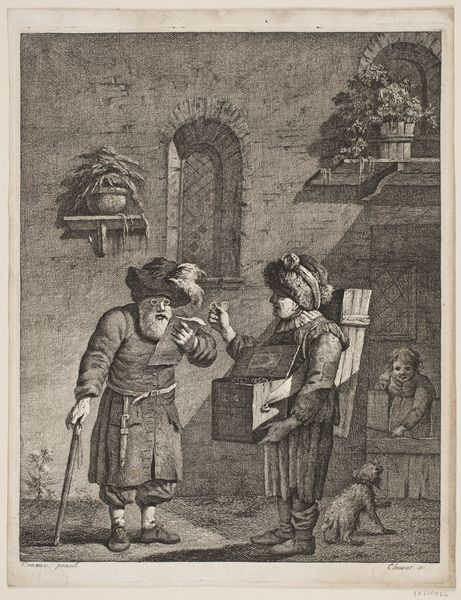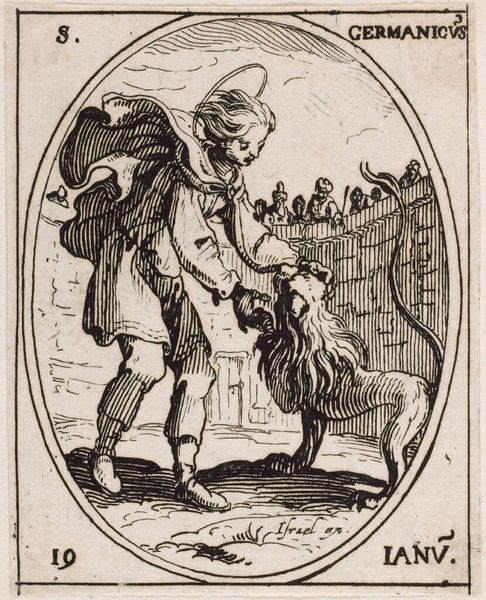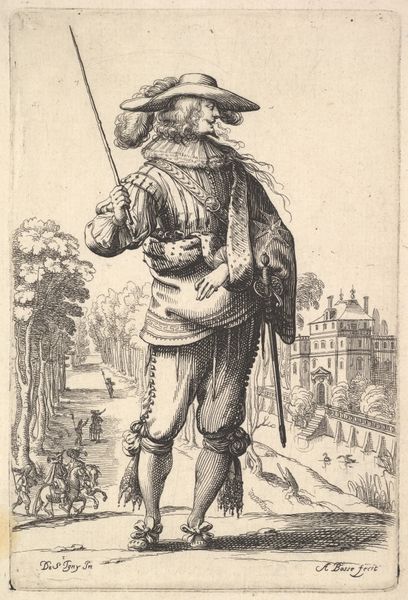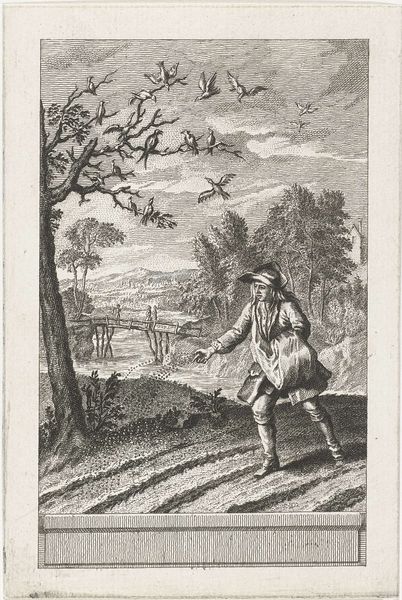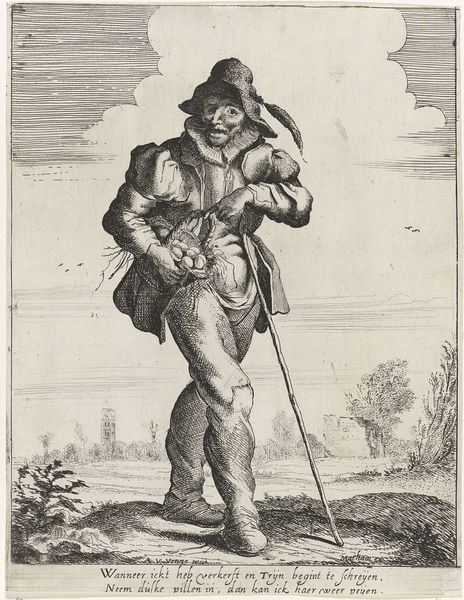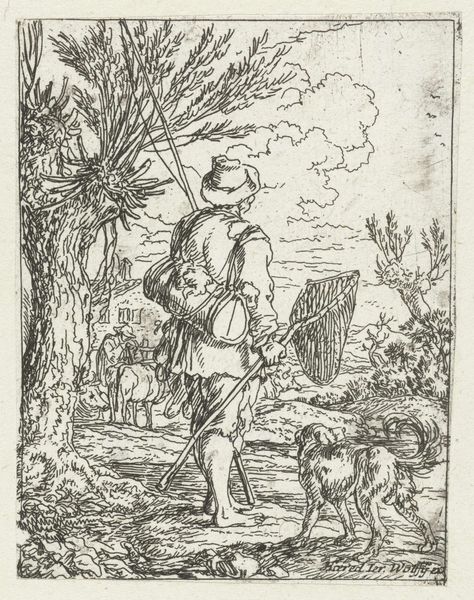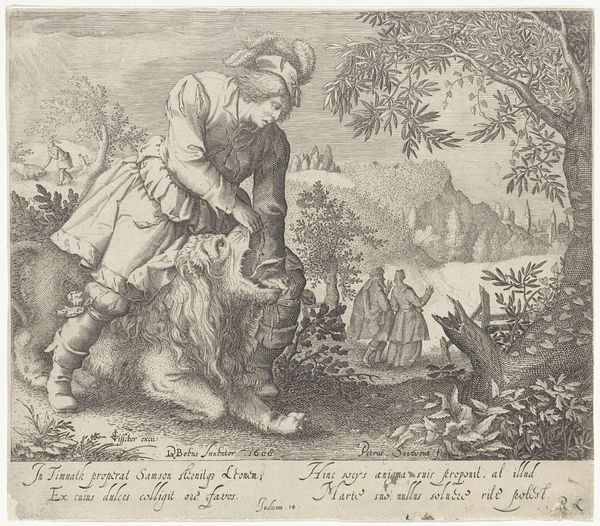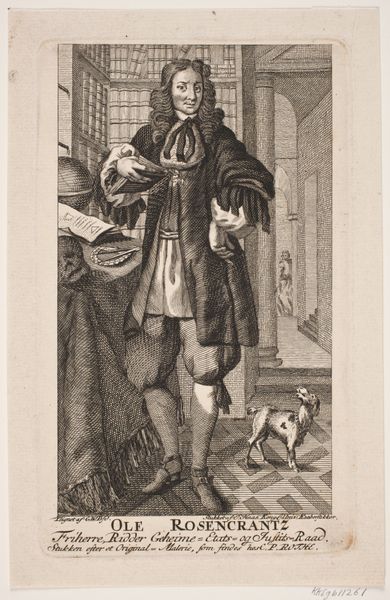
engraving
#
dutch-golden-age
#
dog
#
landscape
#
figuration
#
genre-painting
#
engraving
Dimensions: height 79 mm, width 112 mm
Copyright: Rijks Museum: Open Domain
Editor: This is Johann Gelle’s “Blind in de Liefde,” an engraving from 1624. It shows a disheveled man being led by a dog with what appears to be a rather unforgiving landscape in the background. There is a sombre, perhaps melancholic feel to the piece. How do you interpret this work? Curator: It’s important to recognize how images like these reinforced social hierarchies in the 17th century. Gelle presents a figure who seems dependent, possibly seen as a burden to society. How does this image participate in the early modern discourse about disability and poverty? Consider, too, the gendered aspects: the two women in the scene appear trapped inside and complicit. Editor: So, you're saying the engraving reinforces the stereotype of vulnerable people being social outcasts, therefore promoting that view? Curator: Precisely. Look at the symbolic weight placed on the dog, a figure of low social standing forced into service, almost as vulnerable as its master. Then consider the title itself: is Gelle commenting on the foolishness of dependence, or the inherent cruelty of love when social systems privilege some and exclude others? Where does agency reside, if anywhere? Editor: The landscape almost seems to mirror his state: barren, with a distant church offering perhaps empty promises of solace. Curator: It’s a potent representation. The dog also leads me to consider ideas of human and animal relationship. Often marginalized humans share many experiences of marginalization and solidarity with non-human animals. Are we complicit when the dog leads this “blinded by love” person onward toward his bleak fate, the future out of the frame of this piece? Editor: I hadn’t considered the piece through such an intersectional lens before, viewing how poverty, gender, and perhaps even species all play a role in perpetuating systemic oppression, now and then. Curator: That’s the beauty of looking at older artworks; their legacy and symbolism offer the possibility for relevant contemporary discourse, reflecting issues from a new angle and creating empathy with the most invisible actors in a historical era.
Comments
No comments
Be the first to comment and join the conversation on the ultimate creative platform.
